Enthusiast P55: Eight LGA 1156 Boards Between $150 And $200
Asus P7P55D EVO
Though in many ways similar to the less-expensive P7P55D we reviewed a month ago, the P7P55D EVO offers a few extremely valuable features to attract gamers and power users. Chief among these are electronic switches that allow the second graphics card slot to function in x8 mode and dual-gigabit LAN with teaming support.
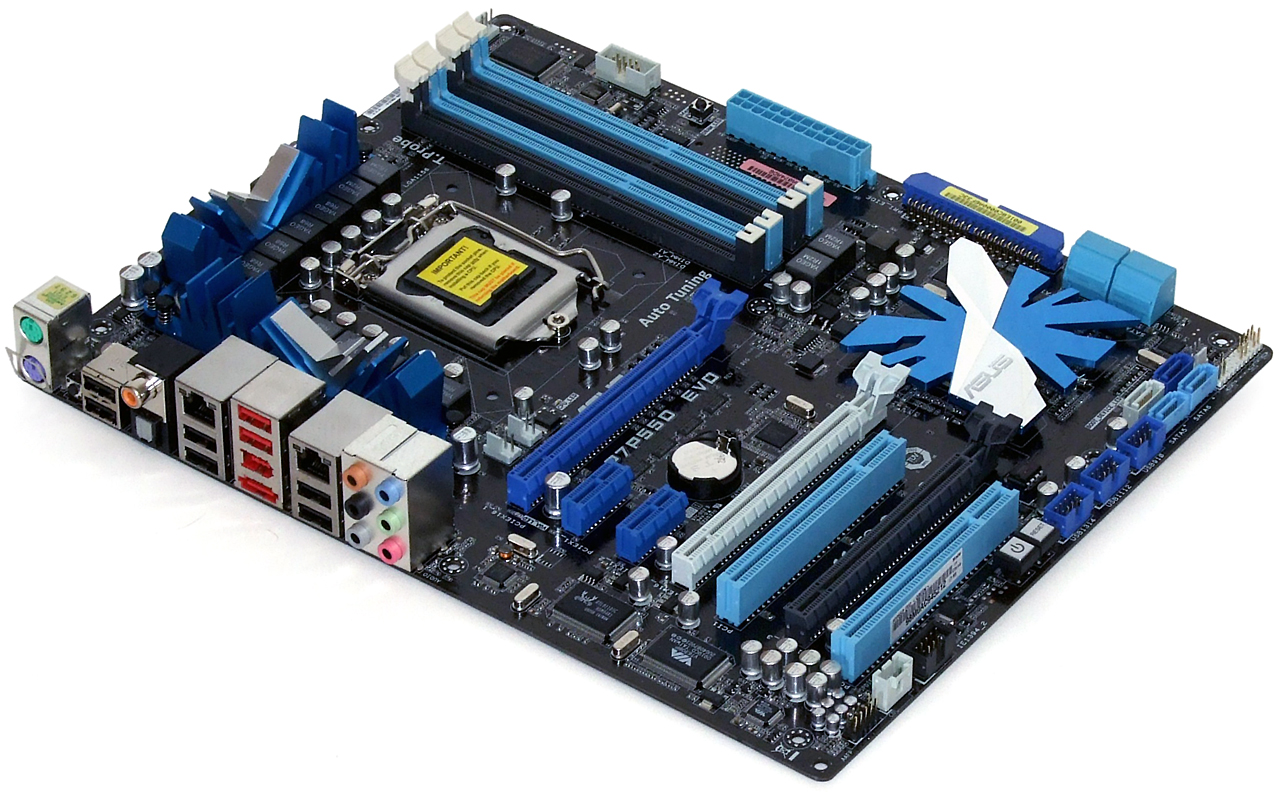
The EVO version also adds a coaxial connector for its digital audio output, a CLR_CMOS button on the I/O panel, a JMB322 multiplier for the internal port of its eSATA controller, and internal power/reset buttons. SATA headers are repositioned for easier installation of long graphics cards in the second x16-length slot, and the x16-length x4 slot of the budget version has been retained as a third slot on the P7P55D EVO.
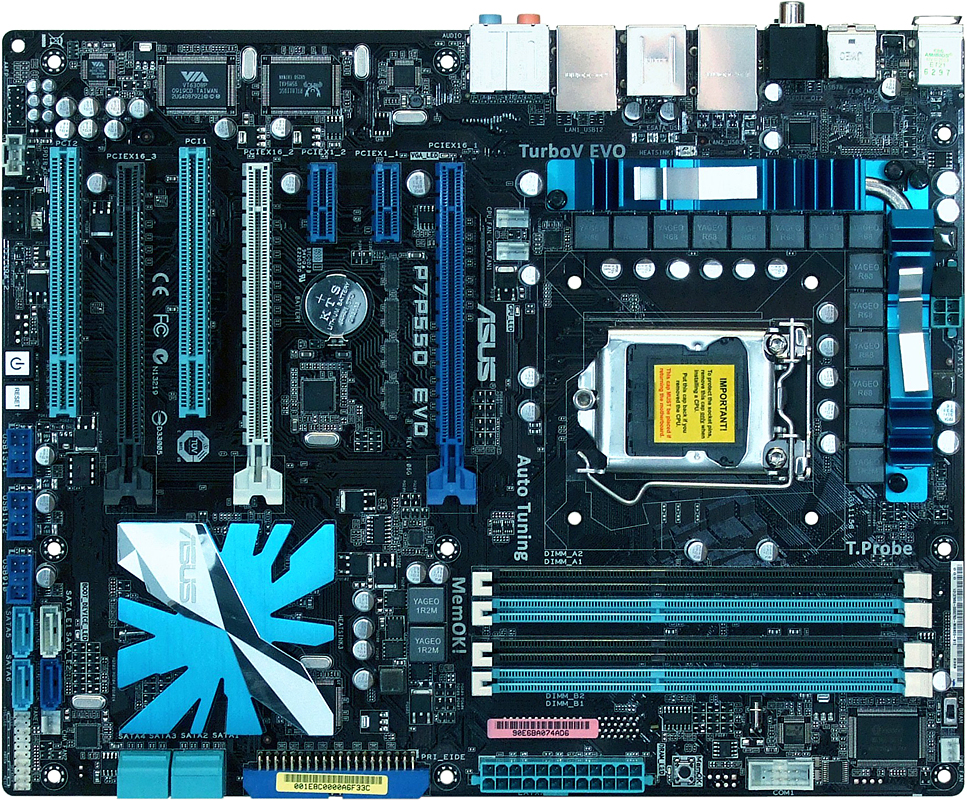
Asus makes full use of seven slot positions by adding two PCIe x1 slots and two legacy PCI slots, placing its two high-bandwidth x16-length slots three spaces apart for improved cooling to the top graphics card. Found between the top two x16-length slots, four electronic switches instantly convert those slots from x16/x1 to x8/x8 modes whenever a long card is installed in that second slot. As with all P55 motherboards that have three long slots, interested 3-way SLI and CrossFire parties need to be aware that the third slot is suitable only for medium-bandwidth applications such as RAID cards, additional displays, or Nvidia graphics cards that have been re-purposed as PhysX processors.
Asus saw no need to upgrade the P7P55D EVO voltage regulator from the less-expensive version’s 14-phase design, and it also retains the cheaper board’s other exceptional features such as MemOK and Q-LED. MemOK eases booting with problematic RAM, while Q-LED indicates which component has become unresponsive during a failed boot attempt.
Asus also retains one of the nuisances from the less-expensive part--the bottom rear-corner FPA front-panel audio connector. We have to wish the best of luck to anyone who installs this motherboard into a case that has top-panel or upper-bay audio jacks.
Asus leaves out Windows XP RAID users by omitting any floppy connector, even though the feature is likely supported by the P7P55D EVO’s multi-I/O controller. Yet, the EVO panders to the legacy-storage crowd with an Ultra ATA connection.
BIOS
Get Tom's Hardware's best news and in-depth reviews, straight to your inbox.
Asus' Ai Tweaker menu offers a wide range of voltage and frequency settings across two pages. In addition to required overclocking parameters, advanced overclockers will welcome signal amplitude, clock skew, and DRAM-reference voltage settings.


Asus' OC Tuner utility allows the system to automatically tune its own overclock. The highest Turbo profile pushed our CPU base clock to 161 MHz, but fortunately kept the processor’s Turbo mode operational.
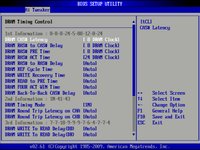

DRAM timings consume almost two pages in a separate submenu. Asus allows users to configure only those settings with which they are familiar and to leave others in automatic mode.
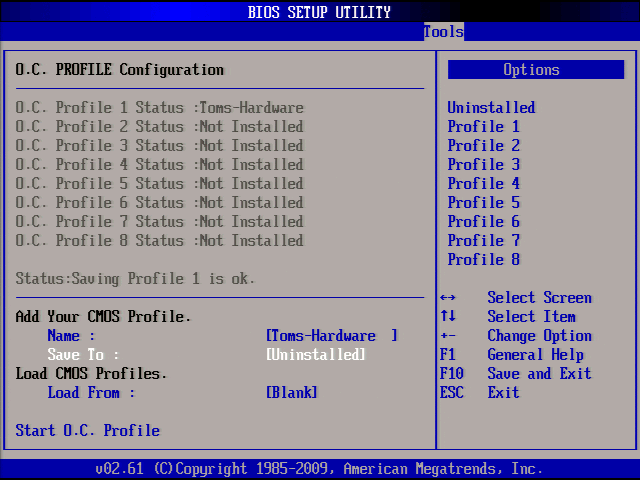
Asus OC Profile stores up to eight custom settings onboard or exports these profiles to an external drive.
Accessories
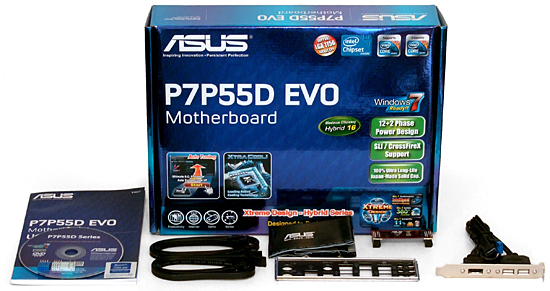
The P7P55D EVO includes four SATA cables, though it tops the basic P7P55D by adding an SLI bridge and an eSATA/USB breakout plate.
-
skora There's two market segments. Once you get the features you need, there's overclockers, and stock users. I've never seen a mobo recommended based on its application performance and all thats looked at is how well it OCs. Hopefully, people read the article and don't just go buying biostar expecting the regular quality of gigabyte or asus though the asus is a little overpriced here for my taste. That $25 can go towards a better GPU, but I'm a gamer.Reply -
Crashman enzo matrixinterestingReply
Gigabyte had some additional interesting news about the new P55A-UD4P, where the addition of the letter "A" supposedly means "Advanced" and refers to the addition of SATA 6.0 Gb/s and USB 3.0 controllers. Unfortunately, it wasn't ready when the comparison was written. The "A" also cost slightly more. -
ibnsina For $15 more is best to go for the newly released Giga-byte GA-P55A-UD4P, the extra’s you get are:-Reply
2 x USB 3.0
2 x SATA 6Gb/s.
$184.99 on newegg. -
Crashman ibnsinaFor $15 more is best to go for the newly released Giga-byte GA-P55A-UD4P, the extra’s you get are:-2 x USB 3.0 2 x SATA 6Gb/s.$184.99 on newegg.Reply
$15 for all that sounds great, unless those features are useless to you. SATA 6.0 Gb/s will remain completely useless until long after the board is outdated, and USB 3.0 is nothing more than an eSATA substitute at the moment. -
apache_lives Why do we bitch about IDE and FDD connectors? If your using windows xp and IDE hdd/dvd drives your should be ashamed, and even then you can get USB floppys etc, and if you are using those fittings you are not getting the true performance out of your modern system, and IDE also makes boot times longer thanks to detection and legacy delays - cudos to those who ditch those ports in an effort to modernise modern systems, and to those who keep them - its like adding ISA ports to the board - times up.Reply -
cahl The new P55A-UD4P has better power phasing, 12+2 vs 8+2 on the old gigabyte UD4P, and probably more stuff aswell, like the LOTES socket, well worth the extra $15 to me.Reply -
bigballinggpr You don't bring up MSI's board at all in the conclusion. . . i'm a little curious as to what your final thoughts are on it.Reply -
Crashman apache_livesWhy do we bitch about IDE and FDD connectors? If your using windows xp and IDE hdd/dvd drives your should be ashamed, and even then you can get USB floppys etc, and if you are using those fittings you are not getting the true performance out of your modern system, and IDE also makes boot times longer thanks to detection and legacy delays - cudos to those who ditch those ports in an effort to modernise modern systems, and to those who keep them - its like adding ISA ports to the board - times up.Reply
You mean complain? Like you're complaining right now? It's all a matter of logic: There are probably more Windows XP users carrying over their old OS into a new build than there are Ultra ATA users carrying over their ancient hard drives. Therefor, the floppy interface, as outdated as it is, is more useful than the Ultra ATA interface.
The problem as described is that you PAY for an Ultra ATA controller. Why bother? Even if you're an XP devotee you probably don't WANT to pay for an Ultra ATA connector.
But for most motherboards, the floppy interface is free. It doesn't slow down boot times or performance either, if you don't need it you can ignore it.
Well, maybe you can't ignore it, but a logic dictates over emotion in reviews.
THG has no reason to love or hate the floppy connector, no stake in the legacy OS game, but anyone reader who wants to play the hater deserves to be called out for it. As for the manufacturers, honest reporting is Tom's Hardware's goal. Personally, I like the fact that some manufacturers provide legacy features and others don't, both types of products work well. -
doomtomb Replywith only a single PS/2 port left behind to support the older mice occasionally preferred by seasoned gamers
This is from the page on the EVGA P55 but you can clearly see it is a purple PS/2 port which is for keyboards... lol
